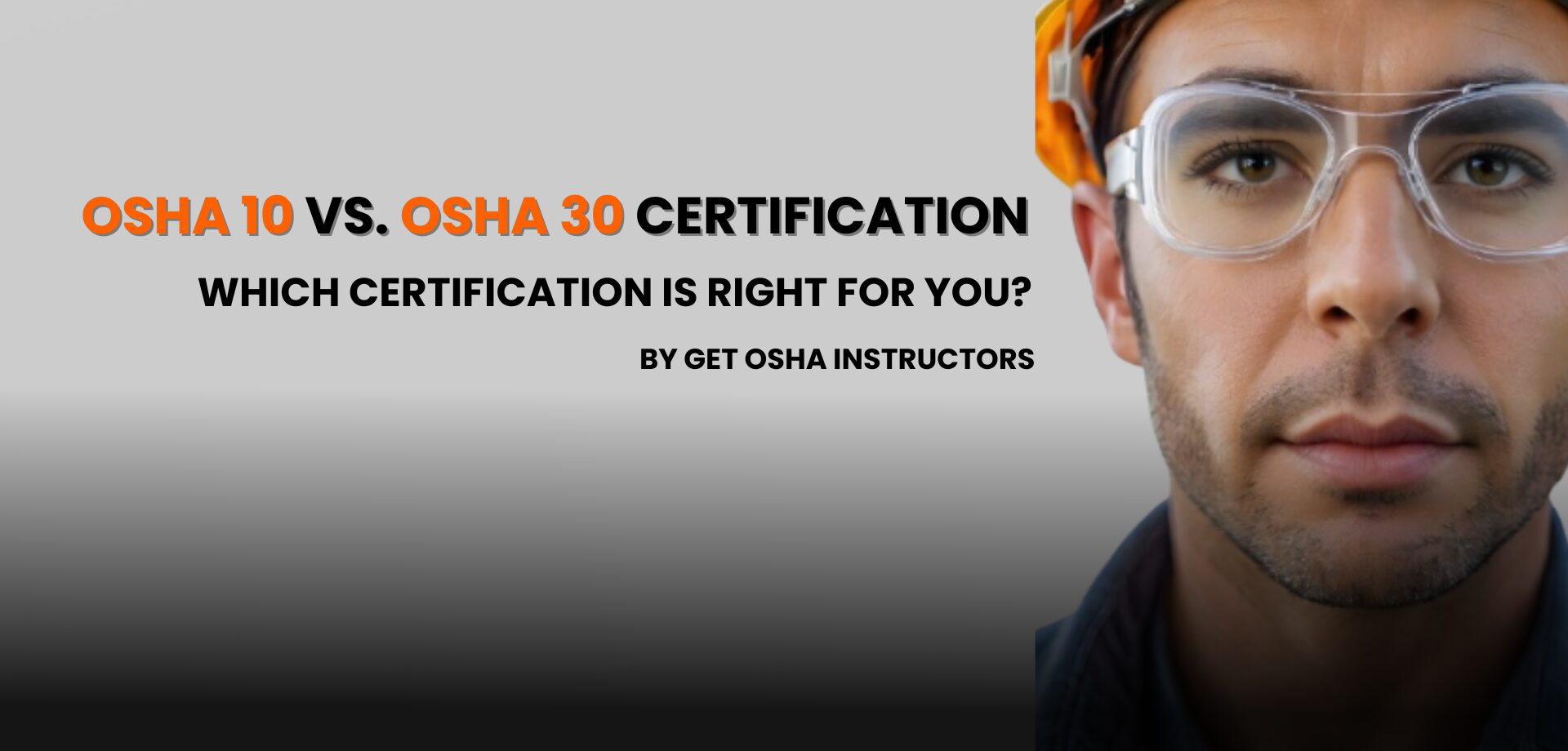
When it comes to workplace safety, obtaining an OSHA (Occupational Safety and Health Administration) certification can make a significant difference in your career. But with two popular options available OSHA 10 and OSHA 30—you may find yourself wondering which one is best suited for your needs. Both certifications offer essential knowledge to help maintain safe and healthy working environments, but the key difference lies in the depth of training, the intended audience, and the career goals you’re pursuing.
In this comprehensive guide, we’ll break down the distinctions between OSHA 10 and OSHA 30, helping you determine which certification aligns with your career path.
The OSHA 10 and OSHA 30 training programs are designed to educate workers about occupational hazards and safety practices. The numbers refer to the hours of instruction, with OSHA 10 being a 10-hour course and OSHA 30 offering 30 hours of in-depth training. These certifications are highly regarded in industries such as construction, manufacturing, healthcare, and other high-risk sectors where safety compliance is a top priority.
While both courses cover a range of safety topics, they are tailored for different audiences based on job responsibilities and the level of safety knowledge required.
OSHA 10 is ideal for entry-level workers who are new to the workforce or to safety regulations. This certification focuses on the fundamental aspects of workplace safety and is intended to help workers recognize and mitigate common hazards. If you’re just starting your career in industries like construction, manufacturing, or warehousing, OSHA 10 provides you with the foundational knowledge to protect yourself and others on the job.
For those entering a new industry or needing to meet minimum safety training requirements, OSHA 10 is an excellent start. However, if you’re in a supervisory or more advanced role, you may need to consider OSHA 30.
The OSHA 30 certification is a more comprehensive training course designed for supervisors, managers, safety officers, and individuals who hold responsibilities for overseeing others’ safety at work. This certification dives deeper into safety protocols and compliance measures, offering advanced knowledge on how to handle workplace hazards, ensure regulatory compliance, and develop effective safety programs.
For those in leadership positions, OSHA 30 offers the advanced tools and knowledge required to manage job site safety and meet regulatory demands.
Now that we’ve identified the target audiences for each certification, let’s compare OSHA 10 and OSHA 30 side by side across several key factors:
| Factor | OSHA 10 | OSHA 30 |
|---|---|---|
| Course Length | 10 hours | 30 hours |
| Target Audience | Entry-level workers | Supervisors, managers, safety professionals |
| Depth of Material | Basic workplace safety concepts | Advanced safety protocols, OSHA regulations, compliance |
| Common Topics Covered | Fall protection, PPE, electrical safety, slips, trips, falls | Hazard communication, incident investigation, safety management systems, confined space entry |
| Ideal for Compliance | Minimum safety training for workers | Comprehensive safety management for leaders |
| Cost | $48.00 | $98.00 |
| Recertification Required? | No (But refreshing knowledge is advised) | No (But refreshing knowledge is advised) |
Choosing between OSHA 10 and OSHA 30 comes down to your role within your company, your career goals, and your industry’s requirements.
Additionally, many employers may require OSHA 30 certification for supervisors or higher-level roles, especially in construction and heavy industry. Having the OSHA 30 credential can also boost your career prospects, showcasing your commitment to workplace safety and regulatory compliance.
Both OSHA 10 and OSHA 30 certifications are available through online courses, making it easy and convenient for you to obtain your credentials without the need to attend in-person classes. Look for an OSHA-authorized training provider that offers:
At getoshainstructors.com, we offer trusted, OSHA-authorized training that covers both OSHA 10 and OSHA 30 courses, designed to help you meet the safety standards of your industry.
Whether you choose OSHA 10 or OSHA 30 depends on where you are in your career and your role within your company. If you’re an entry-level worker, OSHA 10 provides you with the basics to stay safe on the job. For supervisors and managers, OSHA 30 offers advanced training to ensure you can effectively lead safety efforts and comply with OSHA regulations.
Choosing the right certification will not only help you stay compliant but also enhance your career prospects, especially in industries where safety is paramount.
Ready to get certified? Visit getoshainstructors.com to enroll in your OSHA 10 or OSHA 30 course today!
GetOSHAInstructors.com is specifically designed platform for OSHA 10 and 30 Hour Authorized Online Training, powered by CickSafety.
Copyright © 2025.